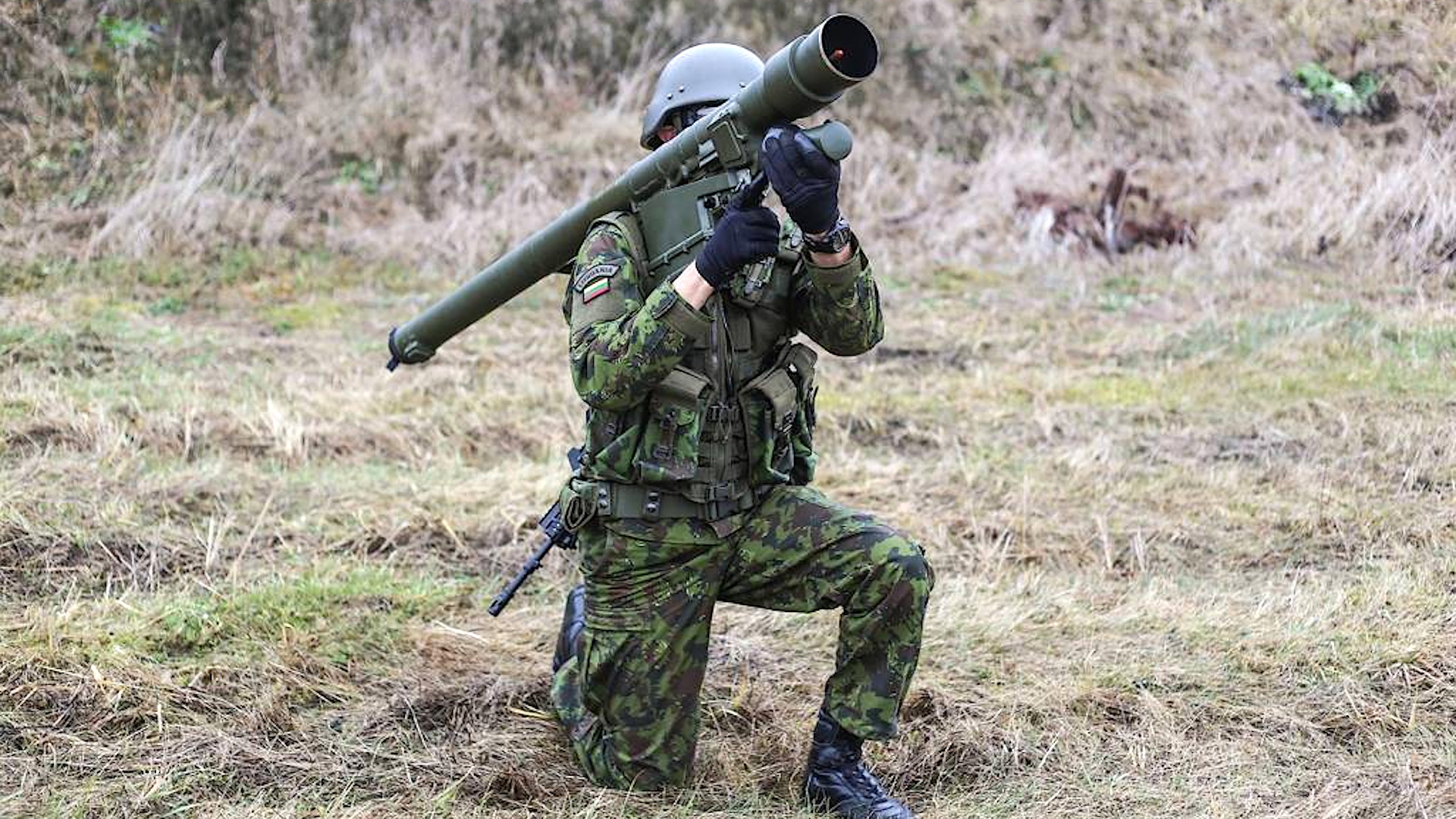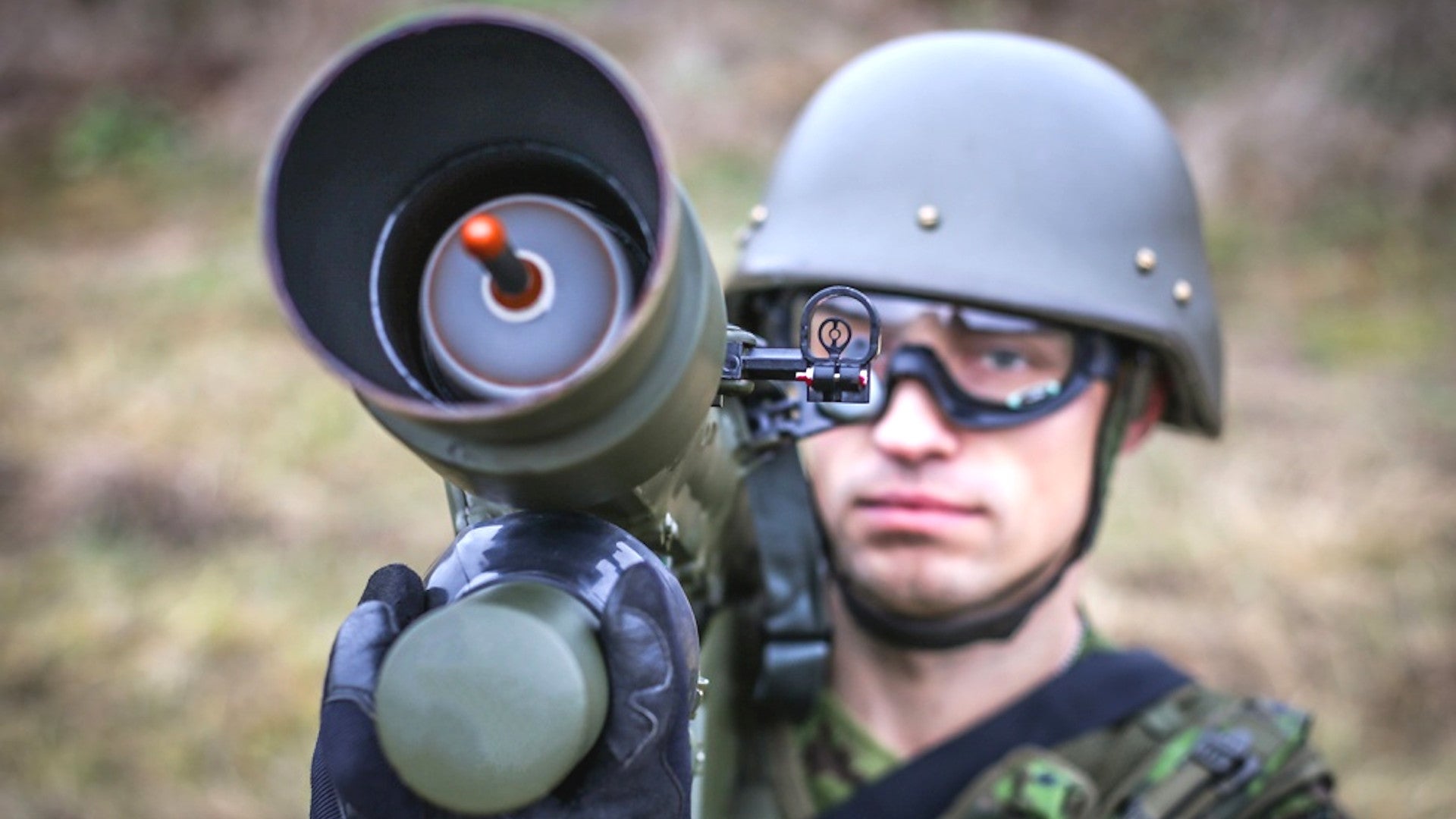Poland’s Prime Minister Mateusz Morawiecki has confirmed his country is considering transferring Grom shoulder-fired surface-to-air missiles, as well as unspecified drones and ammunition, to Ukraine. The Polish government is the latest one to announce plans to help bolster the Ukrainian military amid persistent fears that Russia could be poised to launch a new military intervention into that country in the coming weeks.
Morawiecki spoke about the proposed military aid shipments to Ukraine at a press conference earlier today. The Polish Prime Minister talked to reporters before flying off to the Ukrainian capital Kyiv, where he is expected to meet with that country’s president, Volodymyr Zelensky, among other officials. Zelensky himself announced today that his country was establishing a new partnership, details about which are limited and will not be a formal alliance, with Poland and the United Kingdom. The British government has already stepped up arms shipments, including deliveries of hundreds of NLAW guided anti-tank missiles, and other military aid to the Ukrainian armed forces in recent weeks.

“We stand in solidarity with our Ukrainian neighbors in light of the threat they are now facing from Russia,” Morawiecki said. “However, solidarity and words are not enough today; now they need to be forged into action. For this and other reasons, which are related to the very threatening military situation, which, unfortunately, has developed there, we are also ready to hand over defensive weapons.”
He said that the proposed military assistance packages, which are still being finalized with Ukrainian officials, could include “ammunition, Groms, and various types of drones.”
Morawiecki did not specify what variant or variants of the Grom shoulder-fired surface-to-air missile, also known as a Man-Portable Air Defense System, or MANPADS, Poland might be looking to send to Ukraine or what condition those weapons might be in. The original Grom design, first produced in the 1990s, was a direct derivative of the Soviet 9K38 Igla. However, improved versions, such as the Piorun, also called the Grom-M, which have upgraded targeting capabilities and are better able to evade enemy countermeasures, have since been developed.
The video below shows Grom variants being fired during testing.

Regardless, Ukraine would certainly welcome shipments of any significant numbers of Groms of any type. The Polish government’s decision follows announcements by authorities in Latvia and Lithuania that they are planning to send shipments of U.S.-made Stinger MANPADS to Ukraine. There has been much discussion in recent months about Ukraine’s limited air and missile defense capabilities, as you can read more about here.
MANPADS, in general, represent a lower-tier, shorter-range air defense capability. These weapons can threaten all kinds of aircraft, from fighter jets to helicopters, especially those without robust infrared countermeasures systems of some kind, that flies within their particular engagement envelope. Generally speaking, the MANPADS envelope is below 15,000 feet, with some of these weapons being effective below 10,000 feet.
Stinger is known to be able to hit targets flying further away and at higher altitudes than early models of Igla and Grom, and more recent versions of this American-made missile have improved capabilities against smaller targets, such as drones. It’s unclear how capable any Grom variant may be against unmanned aircraft, which Russian forces are increasingly using to carry out various missions, including intelligence, surveillance, and reconnaissance (ISR), and electronic warfare.
Ukraine’s military is well aware of the threat these weapons pose given its own experiences fighting Russian-backed forces in the eastern part of the country in the mid-2010s, during which it lost a significant number of aircraft. The Russians are as well, with Stingers having been a particularly significant factor in the Soviet Union’s defeat in Afghanistan. Georgian forces also employed Grom variants against Russian forces during the brief conflict between those two countries in 2008, with some degree of reported success.
So, MANPADS would be very valuable for Ukrainian forces now given the very real prospect that airmobile missions utilizing helicopters will be a major component of a Russian invasion, as will attack aircraft supporting working in support of ground elements. A significant number of helicopters have just recently been observed arriving in Crimea, which the Kremlin seized from Ukraine in 2014. While these movements are part of the Kremlin’s ongoing buildup of forces along its borders with Ukraine, which is claimed to be part of forthcoming large-scale drills, there continue to be concerns that these deployments are actually preparations for an invasion.
Beyond defensive use on the battlefield, Ukrainian forces could use MANPADS to harass Russian aircraft, including larger types while they are most vulnerable during takeoff and landing, in or near occupied areas in the event the Kremlin actually launches a new intervention, as well. There have been a number of reports that Ukraine’s armed forces, in cooperation with the United States, have been preparing to employ guerilla tactics against any future Russian invaders.
Grom variants, as opposed to Stingers, have the additional benefit of being very similar in many respects to the Igla MANPADS that Ukraine already has in service. This could reduce the amount of time necessary to train Ukrainian troops how to operate them and speed up their issuing to actual operational units.
Polish Groms might be less likely to end up turned against Ukraine’s own forces should they be captured by Russian forces or their proxies, and generally be less of a proliferation risk compared to other MANPADS. It emerged just last year that the Groms that Poland delivered to Georgia were fitted with a specialized end-user control system design to prevent unauthorized use, as you can read more about here. This was the first confirmed instance of such a device being installed on a weapon of this type, despite years of reported interest in doing so. How effective this system, or any successor designs, might be is unclear, as Georgian Groms captured during the 2008 war in that country did make their way into the hands of Russian-supported forces in Ukraine, where at least one appears to have been fired.
Though the MANPADS are certainly a significant part of this proposed Polish military aid for Ukraine, Morawiecki’s mention of multiple types of unmanned systems is interesting, as well. The Polish Prime Minister offered no specifics about what types of drones his country might be looking to transfer to Ukraine, though some reports have suggested they would be configured to conduct surveillance missions. Companies in Poland certainly produce smaller unmanned aircraft designed to serve in surveillance and reconnaissance roles such as the WB Group FlyEye.

At the same time, there is the possibility that the “various types” of unmanned systems Poland is considering sending to Ukraine might include loitering munitions, commonly referred to as “suicide drones.” Last year, the Polish military announced its adoption of the Warmate loitering munition, which you can read more about here.
Warmate, which is designed to be operated by just two people, can perform localized surveillance and reconnaissance functions, giving troops important added situational awareness. It also offers a way to immediately strike at any enemy forces, including light armored vehicles, that it discovers. These kinds of capabilities can make loitering munitions, in general, significant force multipliers for relatively small units.

All told, it remains to be seen what will ultimately be contained in Poland’s military assistance packages for Ukraine. The Polish government is likely to avoid export control hurdles that some other countries have faced when seeking to send military aid to Ukraine by focusing on transferring systems, such as Grom, that it makes domestically.
Grom shoulder-fired surface-to-air missiles and drones of any kind would certainly add to the growing diversity of the “lethal aid” that various countries are sending to help the Ukrainian armed forces improve their capabilities and overall capacity in the face of any new Russian aggression.
Contact the author: joe@thedrive.com
